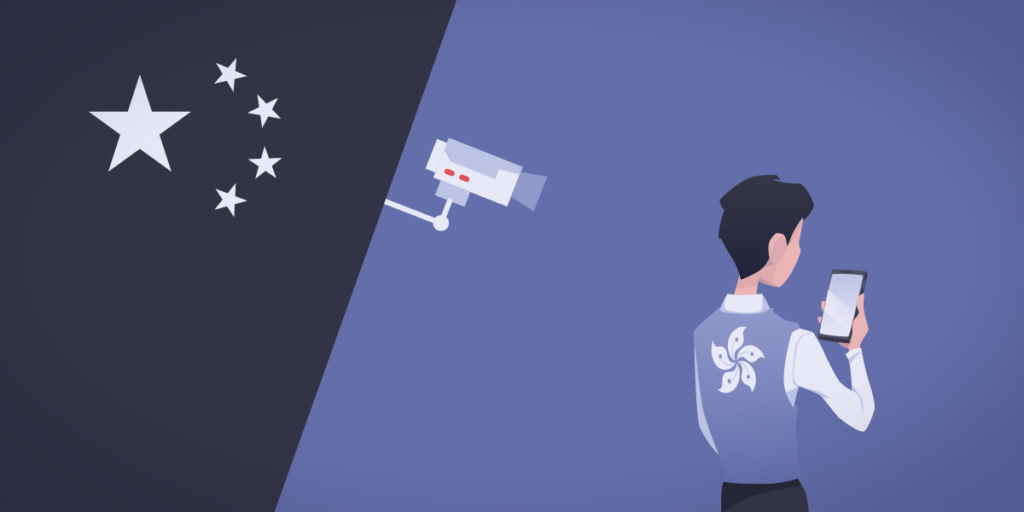ལག་ཁྱེར་ཁ་པར་ལ་ཞིབ་བཤེར་དང་ལྟ་སྐུལ་ཚོད་འཛིན་གྱི་གཡུལ་འགྱེད་ཁྲོད་ཀྱི་དྲྭ་ལམ་བདེ་འཇགས། Device Security in the Battle Against Censorship and Surveillance in Mobile Phones

ང་ཚོ་ནི་མཛུབ་མོ་གནོན་ཐེངས་གཅིག་གིས་གནས་ཚུལ་འཁོར་རྒྱུག་དང་བརྗེ་ལེན་བྱེད་ཐུབ་པའི་དྲྭ་རྒྱའི་གསར་བརྗེའི་དུས་རབས་ཤིག་གི་ནང་འཚོ་སྡོད་བྱེད་བཞིན་ཡོད། དེ་ནི་དྲྭ་རྒྱ་དང་ལག་ཐོགས་ཁ་པར་སོགས་འཕྲུལ་ཆས་དར་འཕེལ་བྱུང་བའི་རྐྱེན་གྱིས་རེད། ཡིན་ནའང་ཡ་མཚན་ཆེ་བའི་གསར་བརྗེ་འདིའི་ཕྱོགས་གཞན་ཞིག་ནི། རྒྱལ་ཁབ་ཅིག་གི་མིག་སྔའི་སྲིད་དབང་དང་སྲིད་དབང་འཛིན་པའི་སྲིད་གཞུང་ལ་གཞིགས་ནས་དྲྭ་སྦྲེལ་ཞིབ་བཤེར་དང་ལྟ་ཞིབ་བྱ་རྒྱུ་དེ་ནི་དབང་འཛིན་ལས་ཁུངས་ཀྱིས་གནས་ཚུལ་འཛམ་གླིང་གི་ས་ཁུལ་གཞན་དག་ཏུ་འཁོར་རྒྱུག་བྱེད་པར་བཀག་འགོག་བྱེད་ཆེད་ཅིག་ཏུ་གྱུར་ཡོད། བཟང་སྤྱོད་དང་མི་མཐུན་པའི་འབད་བརྩོན་འདི་ནི་ཁོང་ཚོས་གཞི་རྩའི་འགྲོ་བ་མིའི་ཐོབ་ཐང་ལ་བརྡལ་བཤིག་གཏོང་སྐབས་རྒྱལ་སྤྱིའི་ནང་རྒྱལ་ཁབ་ཅིག་གི་གཟུགས་བརྙན་སྲུང་སྐྱོབ་བྱེད་ཆེད་ཅིག་རེད། མི་སྒེར་གྱི་ཁ་པར་གློག་ཀླད་ནང་གི་གསང་དོན་དང་བདེ་འཇགས་ལ་གཟབ་ནན་བྱ་རྒྱུ་ནི་ཧ་ཅང་གལ་འགངས་ཆེན་པོ་ཡིན། ལྷག་པར་དུ་དྲྭ་རྒྱའི་རང་དབང་དང་གཏམ་བརྗོད་རང་དབང་བཙན་ཤེད་ཀྱིས་བཀག་འགོག་བྱེད་པའི་ས་ཁུལ་དག་ཏུ་གལ་འགངས་ཆེན་པོ་ཆགས་ཡོད།
ཕྱི་ལོ་ ༡༩༧༣ ལོར་ཁམས་བྲག་མགོར་ས་འགུལ་ཤུགས་ཆེན་ཞིག་བྱུང་ནས་སྡོད་ཁང་དང་མིའི་ཚེ་སྲོག་ལ་གནོན་སྐྱོན་ཆེན་པོ་ཐེབས། མ་འོངས་པར་རང་བྱུང་ཁམས་ཀྱི་གནོད་འཚེ་དེ་ལྟ་བུ་འགོག་ཐབས་སུ་བྲག་མགོའི་བོད་མི་ཚོས་དཔལ་འབྱོར་གྱི་མཐུན་རྐྱེན་སྦྱར་ནས་རྒྱུ་ཆ་ཟངས་ལས་གྲུབ་པའི་སྟོན་པའི་སྐུ་བརྙན་མཐོ་ཚད་ཕི་ཊི་ ༩༩ ཅན་ཞིག་ཕྱི་ལོ་ ༢༠༡༥ ཟླ་བ་ ༡༠ ཚེས་ ༥ ཉིན་ས་གནས་རྫོང་གི་ལས་ཁུངས་ནས་བཀའ་འཁྲོལ་དང་སྦྲགས་གསར་བཞེངས་མཛད། འོན་ཀྱང་། ཕྱི་ལོ་ ༢༠༢༡ ཕྱི་ཟླ་ ༡༢ ཚེས་ ༡༢ ཉིན་རྒྱ་མིའི་དབང་འཛིན་པས་འཛུགས་བསྐྲུན་གྱི་ཡིག་ཆ་ཁག་ནུས་མེད་གྱུར་ཟིན་པ་དང་དེ་འདྲའི་མཐོ་ཚད་ཀྱི་སྐུ་འདྲ་བཞེངས་མི་ཆོག་པར་བསྙད་ནས་གཏོར་བཤིག་གཏོང་དགོས་པའི་བཀའ་ཕབ། གཏོར་བཤིག་དེ་དང་མཉམ་དུ་བྲག་མགོ་དགོན་པའི་ཉེ་འགྲམ་དུ་བཙུགས་པའི་མ་ཎི་འཁོར་ལོ་ཆེན་པོ་ ༤༥ ལྷག་གཏོར་བཤིག་བཏང་ཡོད།
ལོ་རྒྱུས་ཐོག་ནས་བལྟས་ན་བོད་མི་རིགས་ལ་དྲང་བདེན་མ་ཡིན་པའི་གདུག་རྩུབ་དེ་དག་ནི་རྒྱ་ནག་གཞུང་གིས་རིག་གནས་གསར་བརྗེ་ཆེན་པོར་ཁ་གཡར་ནས་བོད་ཀྱི་ཆོས་དང་། སྐད་ཡིག རིག་གཞུང་བཅས་པ་གཏོར་བཤིག་གཏོང་རྒྱུའི་ཐབས་ཇུས་ཡིན་པ་ང་ཚོས་ཤེས་ཐུབ། དེས་མ་ཚད་རྒྱ་ནག་གཞུང་ནས་བཟང་སྤྱོད་དང་མི་མཐུན་པའི་ཐབས་ཇུས་བེད་སྤྱོད་ཀྱིས་སྐུ་བརྙན་དང་མ་ཎི་འཁོར་ལོ་གཏོར་བཤིག་བཏང་བའི་བདེན་པའི་གནས་ཚུལ་བོད་ཕྱི་ལོགས་སུ་འཁོར་རྒྱུག་བྱེད་རྒྱུར་འགོག་རྐྱེན་བཟོ་བཞིན་ཡོད། རང་དབང་ལྡན་པའི་བོད་ནང་གི་གནས་ཚུལ་ཡོང་ཁུངས་ཤིག་གིས་དྷ་རམ་ས་ལར་རྟེན་གཞི་བྱས་པའི་ ‘བོད་གནས་ལྟ་ཞིབ་ཁང་’’ཞེས་པའི་ཉམས་ཞིབ་སྡེ་ཚན་ལ་བརྗོད་པ་ལྟར་ན། སྟོན་པའི་སྐུ་བརྙན་གཏོར་བཤིག་དང་འབྲེལ་བའི་བརྙན་པར་དང་བརྙན་ཐུང་ཉར་འཇོག་དང་བརྒྱུད་བསྐུར་སོགས་བྱེད་པ་དང་། སྐད་འཕྲིན་གྱི་རྒྱབ་ངོས་ཀྱི་པར་ལ་སྟོན་པའི་སྐུ་པར་འཇོག་ན་ཆབ་སྲིད་ཀྱི་ཚོར་བ་རྣོན་པོར་བརྩི་བཞིན་ཡོད་པས་ནག་ཉེས་ཕོག་རྒྱུའི་ཉེན་ཁ་ཡོད་གནས་བརྗོད་ཡོད།
བྲག་མགོར་གནས་སྡོད་བོད་མི་དམངས་ལ་ལུས་བཤེར་ལྟ་ཞིབ་བརྒྱུད་དྲ་ལམ་ཞིབ་བཤེར་བྱེད་ཤུགས་ཆེ་རུ་ཕྱིན་ཡོད། ཕྱི་ལོ་ ༢༠༢༢ ཕྱི་ཟླ་ ༢ ནང་བོད་མི་གནས་སྡོད་པའི་ཁ་པར་ཞིབ་བཤེར་བྱེད་སྐབས་ཉེ་ཆར་ས་གནས་སུ་སྟོན་པའི་སྐུ་བརྙན་གཏོར་བཤིག་བཏང་བའི་བརྙན་པར་དང་བརྙན་ཐུང་སོགས་ཐོན་པར་དོགས་གཞིའི་འོག་བོད་མི་བཞི་དོ་དམ་བཀག་བསྐྱིལ་དང་། ས་གནས་བོད་མི་རྣམས་ལ་གནས་ཚུལ་བརྒྱུད་སྤེལ་བྱས་ཚེ་རྗེས་འབྲས་ངན་པ་ཡོང་རྒྱུའི་འཇིགས་སྐུལ་བྱས་ཡོད།
དེས་མ་ཚད་ཉེ་ཆར་ཀྲུང་གོའི་དབང་འཛིན་ལས་ཁུངས་ཀྱིས་ལྟ་སྐུལ་ཚོད་འཛིན་གྱི་འཐབ་རྩལ་གསར་པ་ཞིག་བེད་སྤྱོད་བྱས་ནས་བྲག་མགོ་རྫོང་དང་ཆབ་མདོ་རྫོང་གི་བོད་མི་བཙན་བྱོལ་བོད་མིར་འབྲེལ་གཏུག་བྱེད་མཁན་གྱི་ལག་ཁྱེར་ཁ་པར་ཐོག་གསང་མྱུལ་གྱི་མཉེན་ཆས་སྒྲིག་འཇུག་བྱས་ནས་ཁོ་ཚོའི་བྱ་འགུལ་ལ་རྗེས་དེད་བྱེད་དགོས་པའི་བཀའ་བཏང་ཡོད། ད་ལྟ་ས་གནས་དེ་གའི་གནས་ཚུལ་ལ་ཚོར་བ་རྣོན་པོའམ་དོགས་ཟོན་སྐྱེན་པོ་ཆགས་ནས་རྒྱ་ནག་དབང་འཛིན་པས་ཕྱི་རོལ་དུ་འབྲེལ་གཏུག་བྱེད་མཁན་ཚང་མར་དོགས་པ་བྱེད་བཞིན་ཡོད་པར་བརྟེན་བོད་མི་ཁྱིམ་ཚང་མང་པོས་བོད་ཀྱི་ཕྱི་རོལ་དུ་གནས་པའི་རང་རང་གི་དགའ་ཉེ་སྤུན་གྲོགས་དང་འབྲེལ་གཏུག་བྱེད་དཀའ་བའི་ཚོར་སྣང་བྱུང་བཞིན་ཡོད།
ང་ཚོས་ཤེས་གསལ་ལྟར་གནས་ཚུལ་འཁོར་རྒྱུག་ལ་ཚོད་འཛིན་གང་དུ་བྱེད་ཀྱིན་ཡོད་པ་དེར་ལྟ་ཞིབ་ཚད་ལེན་དང་ཞིབ་བཤེར་བྱ་རྒྱུ་ནི་ངེས་པ་ཞིག་ཡིན། དྲྭ་ལམ་བདེ་འཇགས་ཀྱི་ཕྱོགས་ནས་བལྟས་ན། མི་སྒེར་ཞིག་གི་ངོས་ནས་བྱེད་ཐུབ་པ་ཞིག་ཡོད་པ་ནི། གལ་ཏེ་ང་ཚོས་ཁ་ཕྱོགས་མ་ནོར་བར་འབད་བརྩོན་ཡང་དག་པ་ཞིག་བྱས་ཚེ། འཇིགས་སྐུལ་དེ་དག་སྔོན་འགོག་དང་ཇེ་ཡང་དུ་གཏོང་ཐུབ། དེས་མ་ཚད་ཞིབ་བཤེར་དང་ལྟ་སྐུལ་ཚོད་འཛིན་ནན་པོ་བྱེད་པའི་སྐབས་སུ་ང་ཚོའི་ཁ་པར་གློག་ཀླད་ནང་གི་གསང་དོན་དང་བདེ་འཇགས་སྲུང་སྐྱོབ་བྱ་དགོས་བྱུང་ཚེ། བྱེད་ཐབས་ཡག་ཤོས་ཁ་ཤས་བློ་ལ་བརྟན་པོར་ངེས་དགོས། དེ་དག་ནི་གཤམ་གསལ་ལྟར་ཡིན།
- གསོག་ཉར་བྱེད་མི་རུང་བ། ང་ཚོའི་ཁ་པར་ནང་གི་ཚོར་བ་སྐྱེན་པའི་གནས་ཚུལ་ཁག་རྒྱུན་དུ་ཡང་ཡང་གཙང་བཟོ་བྱས་ནས་དྲ་ལམ་གསང་མྱུལ་བས་རྗེས་འདེད་རང་བཞིན་དང་འགན་འཁྲི་བདའ་འདེད་བྱེད་པར་གདོང་ལེན་བྱ་དགོས། ཁ་པར་དང་གློག་ཀླད་ནང་ཚོར་བ་སྐྱེན་པའི་གཞི་གྲངས་གསོག་ཉར་དུས་ཡུན་རིང་པོ་བྱས་ཚེ་ཁ་པར་འཛད་སྤྱོད་པ་འཛིན་བཟུང་དང་ཉེས་དོན་ཅན་དུ་འགྱུར་བར་ཉེན་ཁ་བཟོ་སྲིད།
- VPNs ལྟ་བུ་གཡོལ་ཐབས་ཀྱི་ཡོ་བྱད་བཀོལ་སྤྱོད་བྱེད་རྒྱུ། ང་ཚོས་ཉིན་རྒྱུན་གྱི་འཕྲིན་གཏོང་ཁྲོད་བློས་འགེལ་ཆོག་པ་དང་ཡིད་རྟོན་རུང་བའི་VPNsབཀོལ་སྤྱོད་བྱས་ཚེ། རང་གི་ངོ་རྟགས་དེ་དག་ཆུ་ཚད་ངེས་ཅན་ཞིག་ཏུ་སྦས་གསང་ཐུབ་པའི་ཡིད་ཆེས་ཡོད། VPNs བཀོལ་སྤྱོད་བྱེད་ཚེ་འཕྲིན་གཏོང་ལ་ལྟ་ཞིབ་ཚད་ལེན་བྱེད་པའི་དབང་འཛིན་ལས་ཁུངས་ཀྱིས་རྗེས་འདེད་རང་བཞིན་ཇེ་ཉུང་དུ་གཏོང་ཐུབ།
- རང་གི་ལག་ཁྱེར་ཁ་པར་གསར་སྒྱུར་བྱ་རྒྱུ། ང་ཚོའི་ཁ་པར་གྱི་མཉེན་ཆས་མ་ལག་OSཔར་གཞི་གསར་ཤོས་སུ་གསར་སྒྱུར་བྱས་ན། བཙན་དབང་དང་སྟེས་དབང་གང་རུང་གིས་སྒྲིག་འཇུག་བྱས་པའི་དུས་ལས་ཡོལ་ཟིན་པའི་གསང་མྱུལ་མཉེན་ཆས་ལས་སྲུང་སྐྱོབ་བྱེད་ཐུབ་པར་ང་ཚོས་ཡིད་ཆེས་བྱེད་ཀྱི་ཡོད།
- བདེ་འཇགས་རང་བཞིན་གྱི་འཕྲིན་གཏོང་སྟེགས་བུ་བདམས་རྒྱུ། ཕྱོགས་གཉིས་དབར་ཚོར་བ་སྐྱེན་པའི་གནས་ཚུལ་སྤེལ་སྐབས་དང་། སྲིད་དབང་སྒེར་གཅོད་ལམ་ལུགས་ཀྱིས་ཚོར་བ་སྐྱེན་པའི་གནས་ཚུལ་སྤེལ་སྐབས་བདེ་འཇགས་ཀྱི་འཕྲིན་སྐྱེལ་རེ་ཞུ་བེད་སྤྱོད་བྱ་རྒྱུ་ནི་ཧ་ཅང་གལ་འགངས་ཆེ་བ་ཞིག་ཡིན།
We live in an era of digital revolution, where information access and exchange are just one click away from us, thanks to the internet and the rise of smartphones and other devices. But on the flip side of this marvelous revolution, depending on a country’s current regime and ruling government, internet censorship and surveillance has become a go-to for authorities in order to block access to the flow of information to the rest of the world. This unethical effort is to protect a country’s global image especially when they commit basic human rights violations. To be cautious of privacy and security in our personal devices is of the utmost importance, especially in such regions where internet freedom and freedom of expression are forcibly forbidden.
In 1973, Drago in Kham suffered a massive earthquake which caused considerable damage to the residential areas and human lives. In an attempt to ward off natural disasters in the future, local Tibetans in Drago contributed to the funding of a 99-foot-tall bronze Buddha statue which was built on 5th October, 2015 with permissions granted from the district office. However, on 12th December, 2021, Chinese authorities ordered its demolition with claims that the construction documents were invalid and statues of such height are prohibited. The demolition also included 45 more huge prayer wheels erected near the Drago Monastery.
From history, we know that these unjustified cruelty against Tibetans are strategies of the Chinese Communist Party to dismantle Tibetan religion, language and culture on the pretext of Cultural Revolution. Furthermore, the CCP is using unethical means to control the flow of information and truth regarding the demolition of these statues and prayer wheels outside of Tibet. An anonymous source from Tibet told Tibet Watch, a Dharamshala-based research group that “Keeping or sharing photos and videos of demolitions of Buddha statues, and using photos [Buddha Statue] as the background photo on WeChat, is considered a politically sensitive act with offenders facing criminal charges.”
The Internet censorship through physical surveillance on Drago’s Tibetan residents has exponentially increased. In the month of Feb 2022, physical phone searches of Tibetan residents left 4 detained under the suspicion of having photos and videos on their phones that showed the recent demolitions of Buddha statues in the locality. The residents were warned of repercussions if they shared the information with others.
Moreover a new surveillance tactic is recently being used by the Chinese authorities where Tibetans in Drago county and Chamdo with contacts in exile have been ordered to install spyware on their cellphones to track their activities. Now the situation in the locality has become highly sensitive that many families feel the difficulty of contacting their loved ones since authorities suspect anybody who has any contact outside.
As we know that wherever the flow of information is being controlled, surveillance and censorship are certain. From a Digital Security perspective, it is very much possible that as individuals, we can, if we put the right effort in the right direction, prevent and mitigate these threats. Moreover to maintain Privacy and Security on our devices in the face of intense censorship and surveillance, there are some important best practices to keep in mind. These are as follows :
- Don’t be hoarder : Sensitive information in our devices should be cleared as frequently as possible to defy traceability and accountability from the prosecutor. Hoarding sensitive data in devices for a longer duration may put its user in jeopardy of being arrested and criminalized.
- Using circumvention tools such as VPNs : We also believe that in daily communication we can hide our personal identities on a certain level by making use of reliable and trustworthy VPNs. Using VPNs reduces the traceability from the authorities who monitor the communications.
- Updating your mobile phone : We also believe that updating our device software/OS to the latest version can protect us from outdated spywares and malwares if installed forcefully or accidentally as well.
- Choose secure communication platforms : It is very important to use secure messaging applications when the information being exchanged between two parties is sensitive or “deemed” sensitive by an authoritarian regime.
